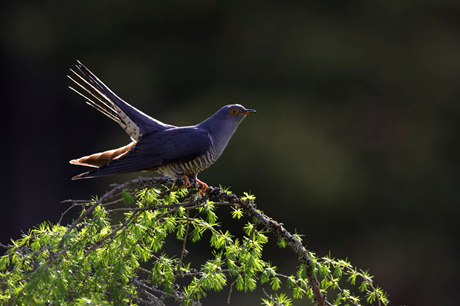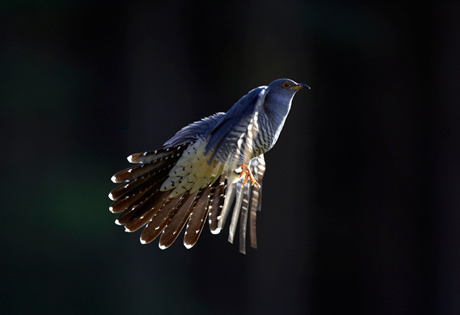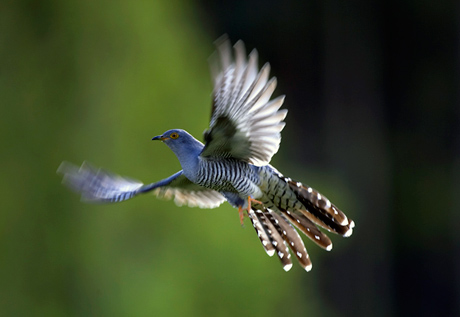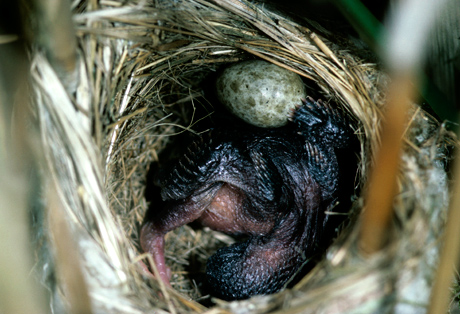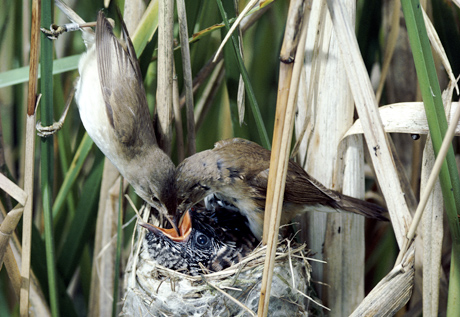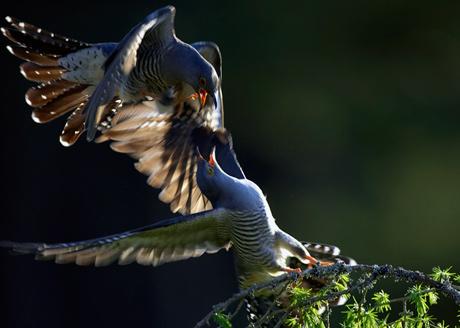

Our Programmes |
Cuckoo! First transmission: 8pm, Friday 9 January 2009, BBC2 A Mike Birkhead Associates’ production, for the BBC series NATURAL WORLD, that uses rare archive film, astonishing new footage of cuckoos and the latest scientific findings to tell a gripping tale of Springtime murder, mystery and deceit.
Programme summary
For centuries, nature-watchers have puzzled over the cuckoo’s strange behaviour, and on how it dupes other birds into caring for a chick that will quickly dwarf them in size after destroying their eggs or babies. Now the cuckoo’s secrets are about to be revealed.
CUCKOO shows exactly how the cuckoo spends its brief annual visit to Britain, using a combination of archive footage by wildlife film pioneer, Oliver Pike, a re-enactment of a study carried out in the 1920s by Edgar Chance, new film, using new techniques, by award-winning cameraman Alastair MacEwen, and the latest findings by Professor Nick Davies, of Cambridge University, who has been studying cuckoos on the National Trust’s Wicken Fen, and elsewhere, for more than 20 years – all presented by television’s best wildlife story-teller, Sir David Attenborough. Like generations of bird-watchers before him, Nick Davies is intrigued by the nature’s most famous cheat, and by how the bird gets away with it. His interest was sparked after he saw tiny warbler adults feeding a monstrously huge baby on the fens as a boy and then learning about Edgar Chance, a wealthy Midlands businessman with a passion for egg-collecting (now illegal) and his eyes on a world record for collecting the most eggs from a single cuckoo in the same season.
Chance achieved his goal in 1922, with a haul of 25 eggs. But it is his meticulous preparatory studies that make him famous among bird-watchers. At Pound Green Common, Worcestershire, Chance became the first person to establish how the cuckoo deposits its egg in a victim’s nest. He then employed Oliver Pike to film what he’d seen, so creating one of the earliest observational nature films, too. The Chance and Pike film solved one mystery, but presented Nick Davies with others. How does the cuckoo choose a ‘victim’? Why aren’t the alien eggs rejected? Why do the tricked hosts look after a chick so obviously unlike their own once it is hatched? And why do they heed the chick’s incessant demands for food – a chore that takes as much effort as feeding 10 of their own offspring? After more than 20 years of experimenting, he’s now able to show that the cuckoo’s survival depends on it staying one step ahead in a wildlife version of an arms race, and that being a parasite isn’t necessarily an easy option. One question remains, though. Why is such a rogue so popular that it’s celebrated by composers, poets, playwrights, in folklore, nursery rhymes and more? According to Nick Davies: “I think people often like the idea of individuals who make a living in a rather unusual way – don't follow the crowd. I think they admire cuckoos because they wonder how on earth they can get away with it. They equate the cuckoo's behaviour with tremendous cunning and wit.”
Sadly ‘cunning and wit’ aren’t keeping cuckoo safe. Changes in the countryside mean there are 50% fewer now than when Edgar Chance and Oliver Pike made their film 80 years ago. But Nick Davies hopes that by revealing the cuckoo’s secrets, he can help to ensure it signals many more Springs. David Attenborough is with him. He ends the film by saying: “We should treasure the brief summer visit of the cuckoo and listen out for delightful call. I, for one, hope that it continues to announce Spring for years to come.” CUCKOO is a film by Mike Birkhead Associates for the BBC2 series Natural World. The series editor is Tim Martin. The film will be aired first on Friday 9 January 2009, BBC2, 8pm with a repeat screening on Sunday 11 January.
Facts & Trivia from Cuckoo Land Cuckoos are parasitic breeders – laying their eggs in the nests of another species and leaving all the nurturing to the other birds. They are among only about 100 birds, out of 10,000 species worldwide, to reproduce in this way. Cuckoos can’t choose just any foster home. Each cuckoo can dupe only one particular host species. On Wicken Fen, where much of CUCKOO was shot, the hosts are reed warblers. Elsewhere in Britain, dunnocks, meadow pipits, pied wagtails and robins are the targets. Cuckoo behaviour has fascinated observers since ancient times, including Aristotle and Aristophanes (who invented Cloud Cuckoo Land). Its call has inspired music by Bach, Handel and Delius and the bird is also celebrated in prose and poems by, among others, Chaucer, Shakespeare and William Wordsworth. In myth and folklore, hearing a cuckoo call is said to be a good omen for those who plan to marry, but a warning of adultery for those married already. Hera, the ancient Greek goddess of matrimony, is often depicted with a cuckoo on her sceptre; one myth says Zeus first made love to Hera after taking the form of the bird. The India god, Indra, assumes the guise of a cuckoo for seduction. The word ‘cuckold’ (the spouse of an unfaithful partner) derives from the bird’s name. Editors of the letter columns of The Times newspaper supposedly look forward to sighting the first letter announcing the first cuckoo call. It is a myth, though, that such a letter is published by the paper each year. In fact, The Times claims not to have published a straightforward ‘first cuckoo’ letter since Edgar Newgass reported hearing one near his Sussex home on 16 April 1940. Edgar Chance, the man who first showed how cuckoos lay their eggs, was a member of the wealthy family that founded the Chance and Hunt glass-making and chemicals company and was the firm’s manager between World Wars One and Two. His passion, though, was egg-collecting (now illegal) and a desire to gather the highest number of eggs from a single cuckoo in one season. He achieved his aim in 1922 with Cuckoo A – the star of Oliver Pike’s film. Chance’s enthusiasm for cuckoos was such that he named his daughter Cardamine, after the cuckoo flower. But, like the cuckoo, Chance was a cheat. To win the world record he tinkered with clutches to create extra egg-laying opportunities for his favourite bird. Today, the cuckoo egg record is held - ethically - by Mike Bayliss, an amateur ornithologist, from Oxfordshire, who counts, rather than collects, eggs, and never interferes with nature. In the Spring of 1988, he counted 25 eggs from the same female, finally crediting her with 113 after eight more seasons. |

